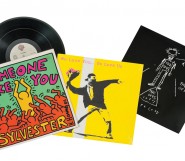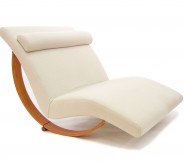Lot #33 - Wandjuk Marika
-
Auction House:Mossgreen
-
Sale Name:Australian Indigenous & Oceanic Art
-
Sale Date:22 Jul 2014 ~ 6.30pm (Part 1 - Lots 1 - 198)
23 Jul 2014 ~ 2.30pm (Part 2 - Lots 199 - 331) -
Lot #:33
-
Lot Description:Wandjuk Marika
(1927-1987)
Djan'kawu at Yalan'bara (circa 1959)
natural earth pigments on eucalyptus bark
83.5 x 158 cm -
Provenance:Painted in the Yirrkala region, North East Arnhem Land; Private Collection; Important Aboriginal Art, Sotheby's Australia, Melbourne, 30 June 1997, lot 3, illustrated; Private Collection, New South Wales
-
Notes:Wandjuk Marika was one of the leading Yolngu artists of his generation. The eldest son of the clan leader, statesman, cultural advocate and master artist Mawalan Marika (c.1908-1967), Wandjuk rose to prominence while advocating for the rights of artists in the marketplace. He was a member of the Aboriginal Arts Board of the Australia Council from 1973 to 1976, then Chair of the Board until 1981. In 1979, he was awarded an O.B.E. in recognition of his services to the arts. The main foundation narrative of WandjukÕs clan, the Rirratjingu, is that of the DjanÕkawu (DjangÕkawu) ancestors commonly referred to as a man with his two sisters. Their creation dramas and narratives form the recurring major theme in the work of the artist, that his father and tutor, as well as of the current generation of Rirratjingu artists. In the ancestral past the DjanÕkawu came to the mainland from far to east, rowing their canoe to YalanÕbara (Yalangbara, Port Bradshaw) on the north-eastern coast of Arnhem Land. The DjanÕkawu women thrust their digging sticks into the ground to create freshwater wells and they gave birth to the first people belonging to the Dhuwa moiety. The sisters repeated these acts as they travelled across the land. Their creative episodes are depicted in both figurative and abstracted or symbolic form in bark painting. WandjukÕs The birth of the DjangÕkawu children at Yelangbara, 1982, in the collection of the National Gallery of Australia1, shows both a literal figuration of the ancestral Sisters giving birth to the various clans, and a symbolic version with images of woven birthing mats or shades. See also DjangÕkawu Cration Story, 1959, by Mawalan Marika in the collection of the Art Gallery of New South Wales in Perkins, H. and M. West (eds.), One Sun, One Moon: Aboriginal Art in Australia, Art Gallery of New South Wales, Sydney, 2007, p.77, and West 2008:69. In this version, Wandjuk Marika appears to present an allegory of life, from birth to death. The painting is a figurative rendition where the DjanÕkawu are depicted beside one of the first creatures they encountered and named upon landing at YalanÕbara, the Australian bustard or bush turkey, buwata. Although the male ancestor is armed with a spear and spear thrower, it is unlikely he is depicted hunting as the Rirratjingu do not prey on one of their main totems. In his paintings of buwata, Wandjuk usually depicts the birds feeding on bush berries that abound in the area of YalanÕbara, and this is likely to be the case here. In this painting, a large group of human figures is shown in two sections; those standing and painted in yellow ochre are likely to represent men, and those kneeling in black, women. The figures are symbolic of the multitude of people created by the DjanÕkawu ancestors, and perhaps even of the division of the Marika family into the sunrise and sunset groups as identified by Wandjuk (Marika 1995:27)2. In the right half of the picture, schools of fish are depicted in a rhythmical pattern of alternating colours. In two sections the fish are drawn against a ground of cross-hatching while in the central section, and behind the tails of the fish in the upper part, patterns of dots represent bubbles in the fishÕs wake. The vertical bars in this half of the painting indicate fish traps. Symbolically, fish traps are ÔcontainersÕ or ÔcollectorsÕ of human souls and this section of the picture may refer to the passage of a person from the natural world to the ancestral, from life through death to the afterlife. Wally Caruana 1 see Caruana, W. (ed), Windows on the Dreaming, National Gallery of Australia, Canberra, 1989, plate 62, p. 112; and in West, M. (ed) et al, Yalangbara: Art of the DjangÕkawu, Museum and Art Gallery of the Northern Territory, Darwin, 2008, p.93 2 Marika, W., Wandjuk Marika: life story / as told to Jennifer Isaacs, University of Queensland Press, Brisbane, 1995
-
Estimate:A$40,000 - 60,000
-
Realised Price:
-
Category:Art
This Sale has been held and this item is no longer available. Details are provided for information purposes only.










